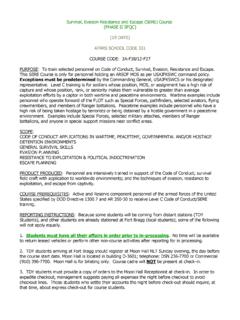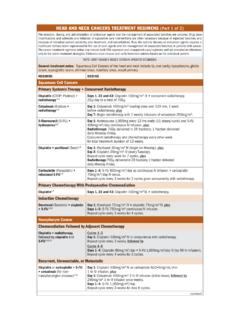Transcription of The Pictish Symbol known as the ‘Crescent V-rod’ and its ...
1 The Pictish Symbol known as the crescent V-rod' and its possible use as a seasonal sundial or farmers almanac . By Jason Nigel Bellchamber Dedicated to my wife Dawn and my kids Benson and Lyra. Pictured is a Pictish Stone From Aberlemno Scotland. Note the crescent V-rod and the Double Disk Z-rod. The people called the Picts were known to have lived in ancient Scotland from the 1st century CE to the 9th century CE. They were so named by the Romans who where controlling the southern portions of Britain at the beginning of the first millennium. Pictish artwork and language classify them as a tribe of Celtic peoples. The cryptic evidence the Picts left us are Symbol stones of both the Christian and pre-Christian eras, and stone circles along the north-east coast of Scotland from Aberdeen to the Orkney Islands.
2 There are nearly 300 fragments or whole Symbol stones of Pictish origin which have been found to date according to Dr .Ian Fraser in his book The Pictish Symbol Stones of Scotland'. The three most common Picitsh symbols in descending occurrence are; 1- the Abstract zoomorphic Dolphin (which may be a crest of the picts), 2- the crescent V-Rod Symbol and 3- the Z-rod symbols (Double disk Z-rod, Serpent Z-Rod, the tuning fork Z-Rod and a few less common variants). These 3 symbols are found carved on both the pre-Christian Symbol stones and the Christian Symbol stones of the Picts. This may suggest that they are not pagan symbols since Pope Gregory in the 6th century decreed that all pagan statues and temples be destroyed in Britain and replaced with Christian churches. At the time of the Pictish conversion to Christianity it was influenced by the Saxons from the south and the Irish from the west.
3 Celtic knot patterns we see today originated from this culmination of Irish, Pictish and Anglo-Saxon influences. The crescent V-rod (example 2) in particular is an interesting shape. It appears to be crescent moon on its side with an 80-85 degree chevron intersecting it. Obviously it has an important significance to have occurred on so many standing stones and crosses. What constant did the Picitsh people deal with? Somehow they knew how to survive and farm at Latitude of North to 59 degrees North. The Picts must have known when the growing season started and when it ended. All without modern instrumentation like a compass or even a known calendar. According to: -Wikipedia, The Pictish Cereal crops included wheat, barley, oats and rye. Vegetables included kale, cabbage, onions and leeks, peas and beans, turnips and carrots, and some types no longer common, such as skirret'.
4 But how did the Picts know the seasons? Consider the fact that the growing season of Pictish Scotland have remained largely unchanged right up into modern times. According to - the growing season in the early 1900s of NE Scotland began 95-100 days after January 1. (15-20. days after the spring equinox (March 21)). The Growing season ends 310-315 days after January 1. (50-55 days after the fall equiniox September 21). It is more than likely that the Pictish farmers also knew how to use lunar cycles to plant and harvest with. A full moon makes the ground moister and a New Moon will make it drier. - From the Old farmers almanac Planting by the Moon? Above-ground crops are planted during the light of the moon (new to full); below-ground crops are planted during the dark of the moon (from the day after it is full to the day before it is new again).
5 Planting is done in the daytime; planting at night is optional! The moon's orbit is elliptical and when it is full or new it seems to stay that way for 3 days at a time, yet when it is waxing or waning it is never the same shape each day. But, the seasons are dictated by the sun and the path it follows in the sky. If you can determine the dates of the 4 seasons you are prepared for survival and optimizing your harvest. I would like to demonstrate how to make a seasonal sundial using 3 standing stones, and knowledge of true North. If you don't have a compass you can determine north by the North star in the night sky. To find it, look for the little dipper, its handle terminal is the North Star. The night sky seems to rotate around this star. It's also known as Polaris. Place one of your stones and another in a direct line to the North Star, this will show you north during the day.
6 Next you would need to determine where the sun rises and sets during the year. In prehistoric times one could determine this by manually measuring the angle of the sun (Azimuth) to a static rock with another stone pointing towards that angle. After the course of a few years one would verify that the azimuths of the solstices are constant. To determine an equinox one would observe that the sun rises on those days at almost 90 degrees N and sets at -90 degrees N. Today we have access to different Sun Path Diagrams. A useful sun path calculator shows the position of the sun and time as well. This is also known as a Sun Path Diagram. Figure 1, is a Sun Path Diagram for the latitude of 57 degrees North, the same Latitude for Aberdeen, Scotland. I chose this latitude since so many standing stone circles and Picitsh Symbol stones are clustered here.
7 Note that Sun Path Diagrams are different for each latitude on the earth. To find what your particular Sun Path Diagram looks like determine your latitude and go to the website Figure 1. The sun's path has some very interesting anomalies;. -The sun rises at a certain azimuth and sets at the exact negative angle or azimuth every day. See Figure 2. -On the equinoxes (first day of fall or spring) the sun rises nearly due east and sets nearly due west. See Figure 2. -During the spring and summer the terminal point of a fixed objects shadow will follow a convex parabola. -During the fall and winter the terminal point of a fixed object's shadow will follow a concave parabola. -During an equinox the terminal point of a fixed object's shadow will follow a straight line going west to east during that day.
8 Every other time of year the shadow's path will be a curved line. Figure 2. Generally the summer solstice sun in Aberdeen Scotland will rise at degrees from north and set at degrees north. Rising time is 3:27am and sets at 8:58pm On the spring equinox in Aberdeen the sun will rise at 6:17am at an azimuth of degrees north and set at 6:18pm at an azimuth of degrees north. On the winter solstice the Aberdeen sun will rise at 8:53am at an angle of degrees north and sunset occurs at 3:23pm at degrees north. -The last and most interesting anomaly of the sun's path is that the opposing solstice dawn and dusks are at opposite angles! See Figure 3 and Figure 4. the winter dawn position is 180. degrees away from the summer setting sun. Figure 3. The summer setting sun is the opposite angle of the winter dawn in every sun path diagram on the earth.
9 Figure 4. From these anomalies of the sun's path we can position 3 stones and utilize their shadows to determine the beginning of each season of the year. The following is small scale and would have been used in the case of the Picts with a large Class 1 standing stone or Class 2 standing Pictish cross as the center stone. Figure 5. 1-Consider one of your stones to be the center of your circle. Figure 5. Figure 6. 2- Set 2 stones at an angle matching the azimuth of the summer solstice dawn and the azimuth of the summer solstice sunset/dusk. Figure 6. Figure 7. Your winter solstice sun will cast a shadow to your westerly rock at dawn. I'm using a flashlight to represent the Suns direction of light in figure 7. Figure 8. Your winter solstice's setting sun's light will cast a shadow on your easterly rock.
10 Figure 8. Figure 9. During the first day of spring or fall (equinox) your first light's shadow will point directly west since the sun rises due east. Figure 9. Figure 10. The setting sun on an equinox will cast a shadow due east and will point at your eastern rock. Figure 10. Figure 11. On the first day of summer your easterly rock will cast its shadow on your central stone at dawn. Figure 11. Figure 12. The summer solstices setting sun will cast a shadow from your westerly rock to your central stone. Figure 12. Figure 13. We remove the stones from the diagram and mark the line from the summer dawn and dusk azimuths to your circle's center. Figure 13. Figure 14. The completed chevron has an angle of degrees. Figure 14. Figure 15. Using a compass, measure a radius of the distance between the south and west points of your circle.





